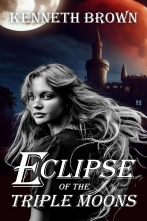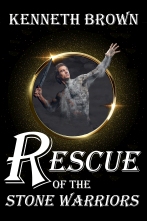Adgitize Press
Six Reasons to Describe Your Characters
Six Reasons to Describe Your Characters
By: Ken Brown
Published: 4/13/2018
Reasons to Describe Your Characters
I find that when I'm listening to friends and co-workers talk to me I have an internal dialogue going on. Yes, I'm listening to what they're saying, but in the back of my mind I'm evaluating their clothing choices, wondering how tall they are, wondering how they get their teeth so white and thinking about something happening in the background that the speaker can't see.
If the person wears a college or professional team jersey or sweatshirt, I may look at the logo and think about the team and whether I like that team or not. Anyway the reason I bring this up is because this might go on inside a character's head while they speak with another character. You don't want to have your protagonist thinking random things at least not often. What you want is the experience to be something that relates to the story later. Here's a list of six reasons to describe your characters.
- To produce a red herring
- To identify the antagonist
- To tell us the character's social status
- To let us know the person better. Are they messy, or OCD clean?
- Make a character memorable
- To identify a minor character without having to provide that person a real name.
Red Herring
Maybe the murderer in your story wears a Chicago Bears' sweatshirt and you might unobstrusively mention that early in the story a witness to the crime sees or talks to a person wearing a Bears' sweatshirt. This could easily be a red herring or the actual killer. Maybe the detective is asking the witness a series of questions and the fact that she sees someone wearing a Bears' sweatshirt running down the street after the murder could be relevant to the story. If it's a red herring have the detective mention it a couple of times of have them find video evidence of the person running down the street. Then the interview followed by all the reasons the person couldn't be the killer.
Identify the Antagonist
But, maybe the clue isn't a red herring, but an attempt to identify the antagonist. Our protagonist later in the story is chasing the killer and they end up at Soldier Field in Chicago where everybody is wearing a Bear's jersey or logo. How does that impact the scene? Or ramp up the tension as the person wearing the jersey is carrying a bomb and now your detective is the only one who can stop him.
Character's Social Status
You can also use this technique to tell us about one of the characters. Bill, our hero, noticed Clarice carrying a Louis Vuitton purse over her shoulder. Does that speak of an individual with money? Or Bill stands behind a woman at the store check out counter counting out each dollar as she hands the money to the cashier. Almost to the point the customer hangs on a little tight and the cashier has to pull the dollars from the customer's hands and the customer screws up her face in worry. Are these the last dollars to her name?
Know the Person Better
Or Mary pulled wads of paper, combs, brushes, and coupons from her purse searching for the purchase receipt so she could return the sweater that didn't fit. Does that tell us Mary is un-organized or messy?
Describe a Character to Make them Memorable
This is useful for describing a character, whether a main character or minor character. The people are talking and Bill is thinking in the back of his mind about the scar on the person's face, the large, purple birthmark above the lip, or wondering if the man was a boxer as a youth because he has a nasty hook to his nose like someone had re-arranged his face. Do this with purpose to describe the person in a way that the reader sees the scar and wonders where did it come from? Maybe three scenes later the character tells us more about the scar. Leave a little back at first or make the hero work to find out more about it. Don't just jump in and tell us about the fight with their little sister and a broken doll that caused the scar. Make the person scary at first and then later when the reader knows them better tell us about the incident with the sister.
Identify a Minor Character with No Name
Sometimes as a story goes along you bring in characters that will be used in a single scene and then never step into the book again. You don't want to name the character, but you want to attribute dialogue tags to her. For example, Mary is standing in the clothing store looking at blouses. A frumpy woman comes up to her and speaks with a nasal accent, "May I help you?"
Mary said, "I'm looking for a new blouse for Easter."
MS Frumpy responded, "That blue paisley would look nice on you."
Or describe a man as having a beak like nose and then reference him as Beak Nose.
Beak Nose said, "I'm gonna hurt ya if you don't stop bothering the boss."
The key is to do this with purpose. Why are you doing it? Are you trying to set the scene, plant a clue or describe a character? If you're setting a clue to be used later in the story make sure the comment is buried deep in a paragraph. You want the reader to notice it, but not as a big flashing sign. All these techniques will work, but you have to add them to the story with purpose and control.
Recent Blog Articles
Full Moon Snow Covered Backyard
My Current Projects October 2020
Make Your Settings Do Double Duty
Understanding the Scene Process
What is a Scene Purpose or Focus
The Reaction Scene or Sequel Scene
What are the Building Blocks of a Novel
Your Writing Effort is Front Loaded
What I Learned from Reading Lee Child Books
Six Reasons to Describe Your Characters




